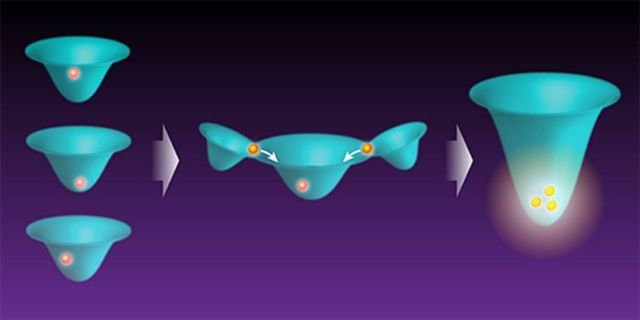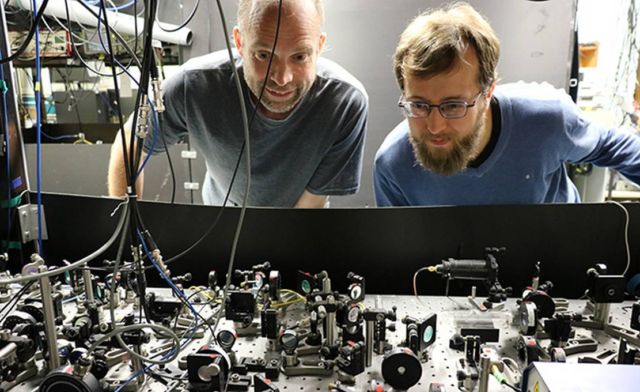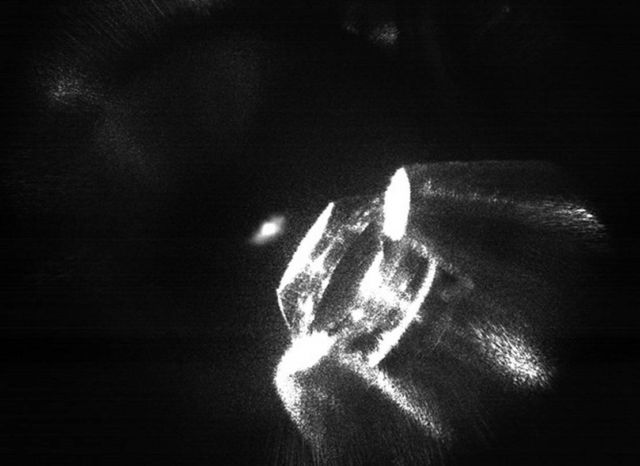Otago scientists using optical tweezers grab three individual atoms and observe three-body collisions, in ground-breaking experiment.
In a first for quantum physics, University of Otago researchers have “held” individual atoms in place and observed previously unseen complex atomic interactions.
Above: Laser-cooled atom cloud viewed through microscope camera. Credit University of Otago.
A myriad of equipment including lasers, mirrors, a vacuum chamber, and microscopes assembled in Otago’s Department of Physics, plus a lot of time, energy, and expertise, have provided the ingredients to investigate this quantum process, which until now was only understood through statistical averaging from experiments involving large numbers of atoms.
The experiment improves on current knowledge by offering a previously unseen view into the microscopic world, surprising researchers with the results.
“Our method involves the individual trapping and cooling of three atoms to a temperature of about a millionth of a Kelvin using highly focused laser beams in a hyper-evacuated (vacuum) chamber, around the size of a toaster. We slowly combine the traps containing the atoms to produce controlled interactions that we measure,” says Associate Professor Mikkel F. Andersen of Otago’s Department of Physics.
When the three atoms approach each other, two form a molecule, and all receive a kick from the energy released in the process. A microscope camera allows the process to be magnified and viewed.
“Two atoms alone can’t form a molecule, it takes at least three to do chemistry. Our work is the first time this basic process has been studied in isolation, and it turns out that it gave several surprising results that were not expected from previous measurement in large clouds of atoms,” says Postdoctoral Researcher Marvin Weyland, who spearheaded the experiment.
 Using optical tweezers, researchers observe three-body collisions. L. A. Reynolds et al., Phys. Rev. Lett. (2020); adapted by APS/Alan Stonebraker
Using optical tweezers, researchers observe three-body collisions. L. A. Reynolds et al., Phys. Rev. Lett. (2020); adapted by APS/Alan Stonebraker
For example, the researchers were able to see the exact outcome of individual processes, and observed a new process where two of the atoms leave the experiment together. Until now, this level of detail has been impossible to observe in experiments with many atoms.
“By working at this molecular level, we now know more about how atoms collide and react with one another. With development, this technique could provide a way to build and control single molecules of particular chemicals,” Weyland adds.
 Mikkel Andersen (left) and Marvin Weyland in the physics lab. Credit University of Otago.
Mikkel Andersen (left) and Marvin Weyland in the physics lab. Credit University of Otago.
source University of Otago






Leave A Comment